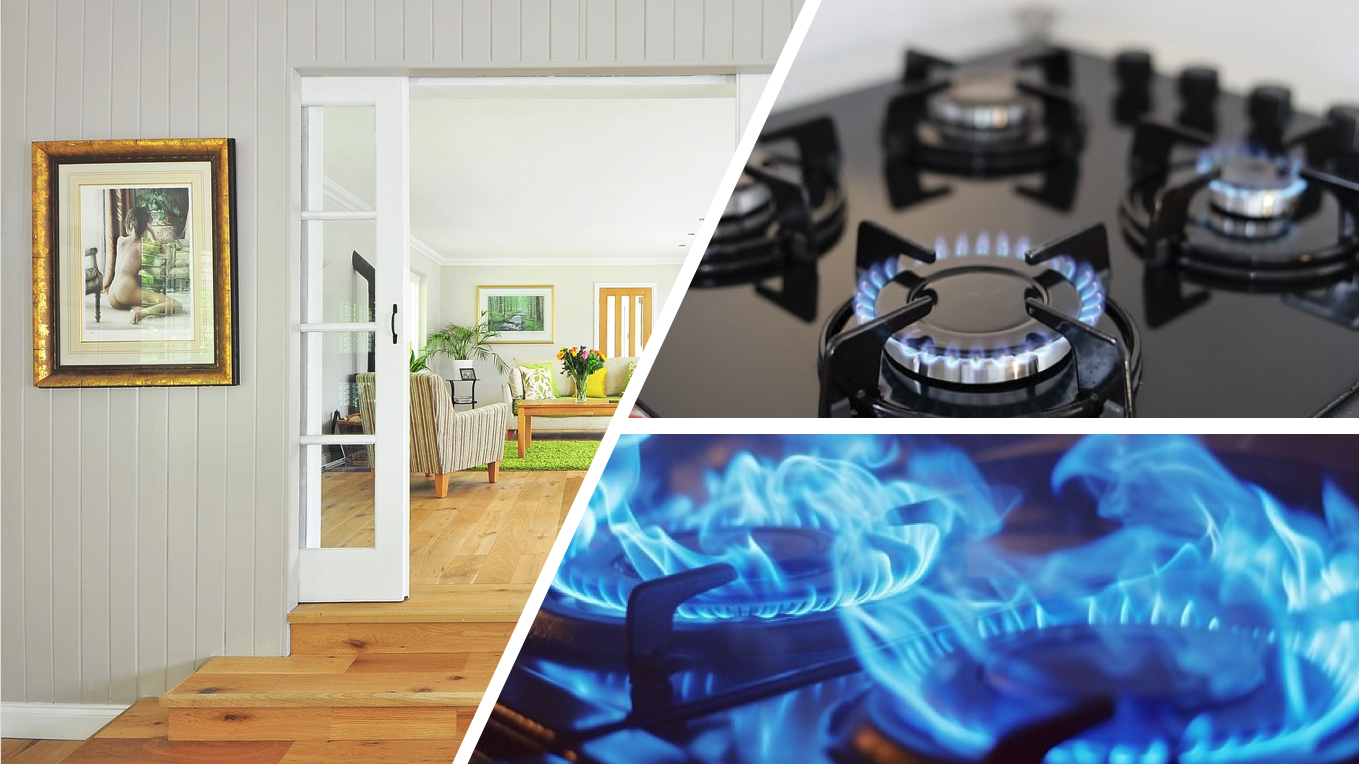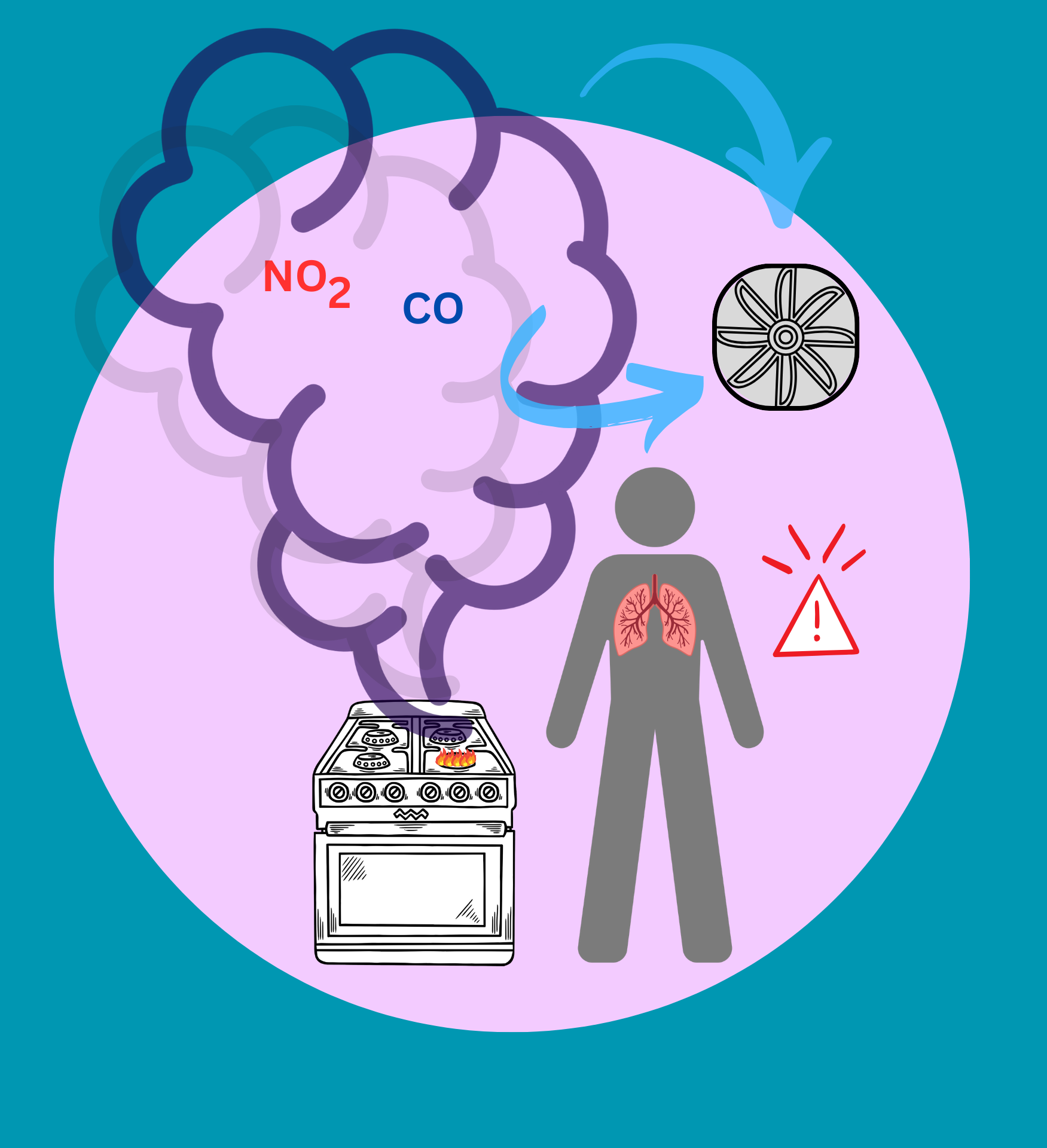How Gas Stoves Affect Indoor Air Quality: Simple Ways to a Healthier Home

Have you ever considered the importance of Indoor Air Quality (IAQ), and how it can be affected by a common household item like a gas stove?
Using gas stoves for cooking produces invisible byproducts, mostly nitrogen dioxide (NO₂) and carbon monoxide (CO). Studies suggest that gas stoves and ovens can quickly lower the air quality indoors when compared to sources of pollution in enclosed spaces where ventilation is limited and pollutants are slow to disperse naturally. In poorly ventilated kitchens, NO₂ levels during cooking may spike up to 90 ppb, exceeding outdoor air quality standards set for health safety. Prolonged exposure to NO₂ even at low levels has been linked to potential respiratory issues, particularly, among children and the elderly.
How to Effectively Manage Indoor Air Quality around Gas Stoves
Fortunately, managing IAQ does not require drastic measures. Here are a few simple yet effective steps to reduce pollutant levels and maintain optimum air quality in one’s home.
First, it is critical to ensure adequate ventilation while cooking. For example, using a range hood that vents outside, can reduce NO₂ levels in the kitchen by 55%. Even simply
opening a window while cooking, can reduce significant amounts of those emissions by allowing better air circulation and displacing pollutants from indoor spaces. Some experts, for example, recommend putting warning labels on gas stoves to remind users of the need to ventilate while cooking. While labels alone will not solve IAQ issues, they may motivate users to adopt ventilation practices, gradually enhancing IAQ in certain indoor spaces.
Another important measure is to maintain one’s gas stove regularly. A well-maintained stove emits far less CO. Properly adjusted appliances produce only about 1 to 3 ppm of CO, while poorly adjusted appliances may generate as much as 15 ppm. Periodically checking the stove will ensure that it operates as cleanly and efficiently as possible.
For those considering an upgrade for longer-term purposes, an electric or induction stoves are excellent alternatives as they do not produce combustion byproducts. These stoves offer the same cooking controls without introducing NO₂ or CO introduction, making them a great option for improving IAQ.

Why Everyone Benefits from Better Indoor Air Quality
The benefits of IAQ are not confined to the kitchen. Various studies have credited better workplace and school air quality with a more than 10% boost in productivity as well as an approximate reduction in absenteeism of 3 to 5%. These figures also translate to significant economic benefits. For instance, a report from New Zealand estimated that IAQ improvement in public spaces could generate a productivity gain valued at $1 billion during the next decade.
Better IAQ might also contribute to greater social equity. Considering low-income communities often face higher levels of exposure to indoor pollutants addressing this disparity can be viewed as a measure to improve social equity. Where air quality is poorer, rates of respiratory illness can be up to 20% higher than the average, with targeted IAQ improvements likely to make some contribution to reducing these health disparities. Gas stoves have been linked to higher incidences of chronic respiratory ailments as well as heart ischemia and more.
Finally, better IAQ supports sustainability. Improved ventilation and optimal building design could support improvements in IAQ while decreasing energy consumption, making these strategies beneficial for both public health as well as the planet.
Small Change, Big Difference
As awareness around IAQ grows, understanding further developments in this area can help us make meaningful improvements in our homes. Enhancing ventilation, maintaining appliances, and searching out alternatives wherever possible, can all contribute to keeping indoor air fresh, comfortable, and healthy. These small steps are valuable investments in our health, productivity, and a commonly shared environment.
Projects like EDIAQI, as well as the other six IDEAL Cluster projects, are making strides in exploring the effects of indoor pollutants on health. They play a key role in raising awareness about the importance of fostering healthier indoor environments. Initiatives like these are enhancing knowledge and shaping policy suggestions for promoting safer IAQ practices across Europe.
Note: This article has been published on behalf of Roberta Baticic from the Lisbon Council.
References:
The Guardian. Understanding Pollutants from Gas Stoves and Indoor Air Quality, October 2024. Available online at: https://www.theguardian.com/environment/2024/oct/28/pollutants-from-gas-stoves-kill-40000-europeans-each-year-report-finds
Stanford University. Study Shows Nitrogen Dioxide Levels from Gas Stoves in Small Kitchens, May 2023. Available online at:https://news.stanford.edu/stories/2024/05/people-with-gas-and-propane-stoves-breathe-more-unhealthy-nitrogen-dioxide
Harvard T.H. Chan School of Public Health. Indoor Air Quality: Is There a Safe Level of NO₂?, January 2024. Available online at:https://www.hsph.harvard.edu/news/hsph-in-the-news/no-safe-amount-of-exposure-to-gas-stove-pollution/
RNZ. Economic Productivity Benefits of Improved IAQ in Schools and Workplaces, 2024. Available online at: https://www.rnz.co.nz/news/national/528926/improving-air-quality-brings-health-and-economic-benefits-report
American Council for an Energy-Efficient Economy (ACEEE). Health Equity in IAQ: The Importance of Targeted Policies, 2024. Available online at:https://www.aceee.org/sites/default/files/proceedings/ssb24/assets/attachments/20240722163116359_5b9fd4a6-53b7-4e2f-9795-00bac5a7f1ff.pdf
EDIAQI. Should Europe Consider Warning Labels for Indoor Air Quality, October 2024. Available online at: https://ediaqi.eu/articles/addressing-air-we-breathe-should-europe-consider-warning-labels-indoor-air-quality
EDIAQI. Evidence Driven Indoor Air Quality Improvement, October 2024. Available online at: https://ediaqi.eu/#:~
=EDIAQI%20stands%20for%20Evidence,Driven%20Air%20Quality%20Improvement.&text=It%20is%20a%20European%20funded,term%2C%20large%2Dscale%20monitoring
Aranet. How Cooking and Gas Stoves Affect Indoor Air Quality, March 2023. Available online at: https://aranet.com/blog/how-cooking-and-gas-stoves-affect-indoor-air-quality/
RMI. Gas Stoves: Health and Air Quality Impacts and Solutions, October 2024. Available online at: https://rmi.org/insight/gas-stoves-pollution-health/